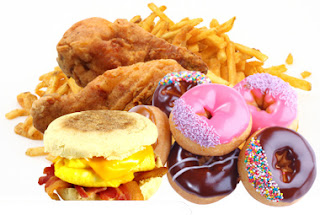By Azilleo Kristo Mohinim
The Nobel Prize
is considered globally to be the most prestigious accolade that can be awarded
to a person or an institution for contributing to specific fields of human
endeavour. One of these fields is Medicine or Physiology. The Nobel Prize for Physiology
or Medicine is annually awarded to people who have immensely contributed to the
advancement of Physiology or Medicine. It represents the zenith of intellectual
originality and creativity in the field of Physiology or Medicine. For the year
2012, the Nobel Prize of Medicine or Physiology was awarded to and shared by
two distinguished scientists who are Shinya Yamanaka and Sir John Gurdon for
their peerless contribution in stem cell research.
 |
| Shinya Yamanaka (right) and John B Gurdon (left), the winners of the 2012 Nobel prize in Physiology or Medicine. Photograph: The Guardian |
Shinya Yamanaka
Shinya
Yamanaka was born on the 4th of September 1962 in Osaka, Japan. He
obtained his MD from Kobe University in 1987 and his PhD from Osaka City
University in 1993. From 1993 to 1996 he was a postdoctoral fellow in the
Gladstone Institute of Cardiovascular Disease in San Francisco. After that he
went back to Osaka City University Medical School to assume the position of an
assistant professor and became an associate professor at Nara Institute of
Science and Technology in 1999 which led to a full professorship in 2003. In
2008, he became the Director of Centre for Induced Pluripotent Stem Cell
Research and Application (CiRA). He is also the member of the International
Society of Stem Cell Research (ISSCR) Board of Directors.
Sir John B. Gurdon
Sir John
B. Gurdon was born at Dippenhall, United Kingdom on 2nd October
1933. He attended Eton College before undertaking Classics at Christ Church,
Oxford. During his course of studying Classics, he decided to switch to
Zoology. He obtained his doctorate from the University of Oxford in 1960. He
did his postdoctoral research at California Institute of Technology and in 1962
he returned to England and was given a teaching post at the Department of
Zoology of the University of Oxford. He is currently at the Gurdon Institute in
Cambridge.
 |
| Removal of a cell from a dividing fertilised animal egg. Photograph: The Telegraph |
The Nobel
Prize for Physiology or Medicine was awarded for reprogramming mature
differentiated cells into pluripotent stem cells. In 2007, Yamanaka managed to
induce mature human skin cells to become stem cells. These stem cells which are
were artificially derived from mature cells are called induced pluripotent stem
(iPS) cells. He managed to accomplish such a feat by introducing four pieces of
genetic material which are now called Yamanaka factors into the genome of the
cell. The Yamanaka factors in actuality are four distinct transcription factors
called Oct 3/4, Sox2, Klf 4 and c-Myc. These transcriptions factors regulate
cellular gene expressions and are highly expressed in embryonic stem cells.
For John
B. Gurdon, his main concern was regarding the genes which were present in the
nucleus of specialised cells. He was wondering whether cellular specialisation
involved the loss of unwanted genes from the genome of cell or merely the
inactivation of the unneeded genes. In 1962, he did an experiment which
involved the removal of the nucleus of an egg of a frog and transferring the
nucleus of a tadpole’s intestinal cells into the enucleated frog egg. Instead
of differentiating into intestinal cells, the egg developed into a normal
tadpole. The result gave concrete evidence that the nucleus of mature
differentiated cells still contain the genes required to develop into a fully
functional organism.
Our
understanding of cell biology and the discovery of new experimental techniques
to form iPS have opened many to avenues to improve the quality of life of
mankind as well as give us a glimmer of hope in curing previously incurable
disease. An example of the incurable disease is cardiovascular disease. It is
the main killer disease in the world currently with, according to the World
Health Organisation (WHO), an estimated 7.3 million people died of ischemic
heart disease in 2008 alone. Heart cells cannot regenerate and once they are
dead due to restricted supply of blood, they are replaced with fibrous tissues
which cannot function as heart muscle. With iPS, it is possible to replace
these dead heart cells by substituting with heart cells differentiated from
iPS. In the near future, it is possible that stem cell therapy for many
currently incurable diseases will become routine clinical practice.
One of the
main concerns when it comes to stem cell research is the usage of embryos in
order to obtain the stem cells. Many religious bodies are fervently against the
usage of embryos in stem cell research since it violates the concept of
sanctity of life espoused by them. Religious opposition to stem cell research
significantly impeded the advancements in stem cell research. However, with the
new technique discovered by Yamanaka, the ethical controversy shrouding stem
cell research can be circumvented considering the fact that the stem cells
obtained are derived from mature cells instead of from embryos. With the
absence of religious opposition, stem cell research can be elevated to greater
heights more quickly.
We are a
species of curiosity. We strive to understand the world as well as ourselves.
The achievements of the two great men mentioned in this article and their
benefits are just a few out of many that exist. As humans accumulate more
knowledge, we are able to manipulate nature in accordance of our will in order
to improve our quality of life. However, bear in mind that we should do so
within ethically acceptable boundaries.




















